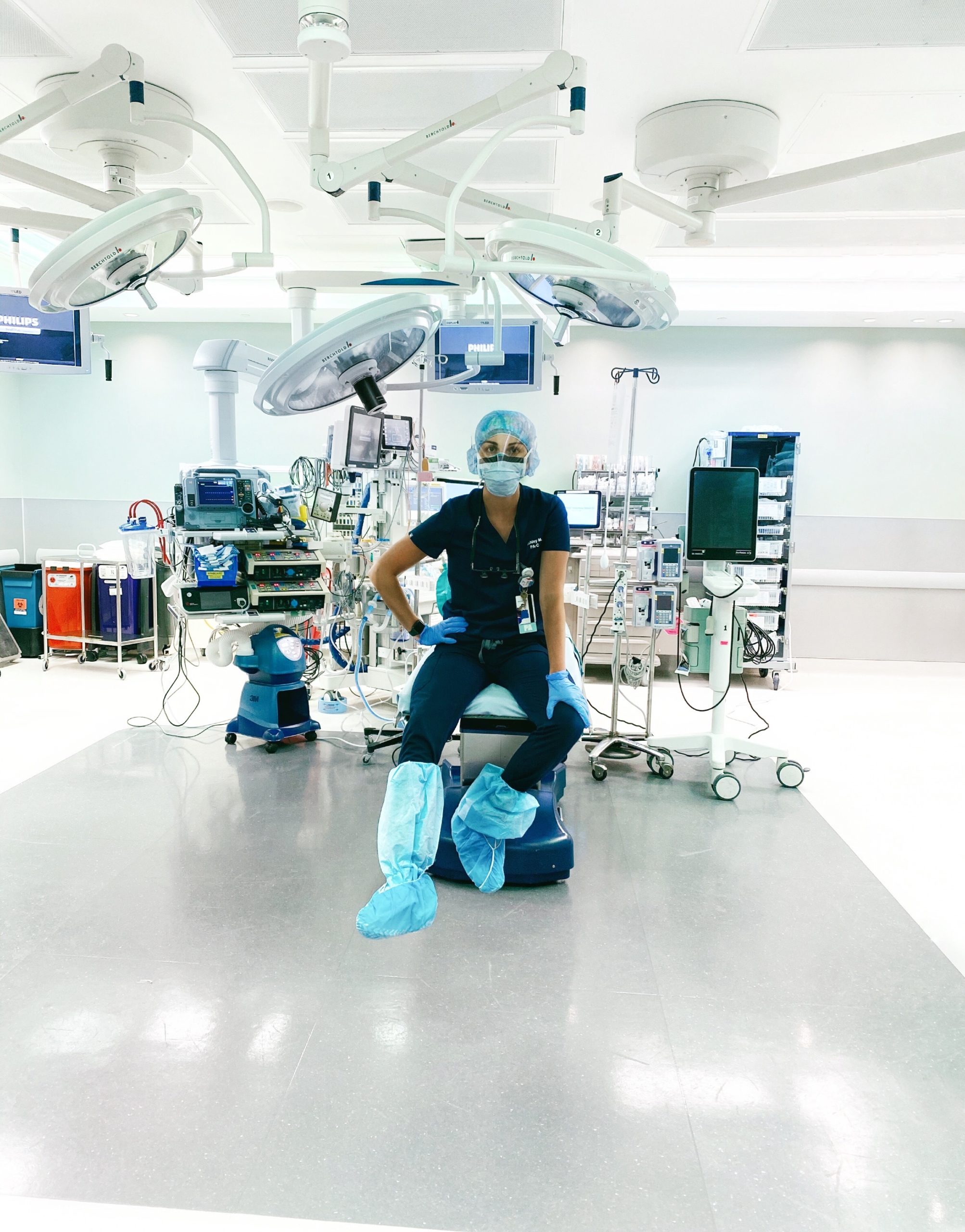A Day in the Life: My Emergency Medicine Rotation
hey there!
Hi, I’m Ashley! Thanks for visiting my site— I truly believe balancing our daily hustle is essential to create a life of success that we can’t wait to wake up to each day.
This space is your daily dose of inspiration from skincare + style, to motivation + tips for future med providers.
xx Ashley
keep reading +
TOP 5
the
01.
02.
03.
04.
Our wedding photos
Skincare products worth the splurge
How I chose my Wedding Dress
New PA on the Block, Pt.1
by CATEGORY
what's in my cart
This week
SHOP
downloads
GET THE
shop this
view my 5 fave basic staples
basic staples
TAKE
QUIZ
how healthy is your your work life balance?
the
skin + beauty
body + mind
life + relationships
education
style
05.
top summer picks of '21
shop all my faves +
my
I’m roughly 3 weeks down and have crossed the half way point of my Emergency Medicine rotation! I never could’ve imagined the things I learned in didactic coming back from recall (or forgotten) as much as they have this rotation! Finally putting a face or case scenario to the disease processes that I somehow crammed in my brain over the last year has honestly been incredible.
Learning hands on is definitely the most effective way I learn and retain information, so the Emergency Department (ED) has been a playground in that regard.
Emergency Medicine is less of a scheduled day compared to most rotations you’ll experience. The lack of mundane routine is obviously one of the beauties about the field. Your shifts can vary from nights to days with no pattern to it, so understanding what will be expected of you for your next shift is important!
Surprisingly, I have studied a TON over this rotation and I can’t tell if that is attributed to being away from home this rotation, or if it’s my excitement about the very broad spectrum of illnesses we see day to day and the desire to feel more competent.

So, here’s how my routine goes… most days:
0700: Alarm goes off for the first (of many) times
0800: I’m a slow mover in the mornings and I come from a mother who taught me to look presentable when I’m out in public (Hispanic mothers, anyone else feel me? Haha)
So, this time is contributed to collecting myself, putting my hair either in a loose pony or leave down to later throw up into a clip when I’m doing a procedure & throw some makeup on (so I don’t scare my patients any more than their trip to the ED, I’ll do a post on which products I use v soon)
0810: I leave my quaint little AirBnb studio and head down the road to the nearest coffee shops. At this location, it’s typically Starbucks to keep my gold star game on point.
from this point to about 1200 I use this time to log patients on the student EMR our school requires us to complete.
Logging patients includes entering an age, gender, chief complaint, procedures you performed on that case and the ICD-10 code you would use to bill for diagnoses. Logging these into our mock EMR system is the absolute bane of my existence, but understandably it’s a great way to track what you’ve done over the course of your year of clinicals collectivity.
Before leaving I’m sure that I have a full stomach before heading in to work, it could be quite a few hours before you aren’t running and have a quick second to take a bite to eat!
1205: I leave my study spot and head to the hospital where I typically arrive ~20 mins early to prepare myself to hit the ground running. When I enter, it’s common for nurses and techs to be hustling past as I find my way to my preceptor’s desk space where we will convene to order labs, assess patient treatment plans, etc. Because it’s our program’s policy to wear whitecoats everyone is quite friendly as the coat gives away my student position.
1250: My preceptor checks the schedule and begins to pick up patients from the waiting room to relieve the earlier shift. He states what patient he’s picked up and tells me the room number and to go get a history and physical exam. So, I do just that! Entering the patient’s room I introduce myself and find the precipitating factor of what brings them in to the ED.
1305: I present the case to my preceptor and tell him my ‘working diagnosis’, meaning this is what I believe the patient is presenting with before we utilize our labs and imaging.
1307: I’m off to another patient room while my preceptor goes to the patient’s room I just visited to perform his own evaluation.
1315: I present the new patient case to him and inform him of my ‘running diagnosis’ for the second patient. After this, we discuss whether my thought process was parallel to his regarding the first patient and the reasons why/why not if they differ. Next, we order labs on both patients and continue the same pattern for a few hours.
If a patient presents that needs a procedure, we discuss the possibilities of results the procedure should or can end up in. Next, we collect the material and tools needed to perform (or the nurse already has it setup in the patient’s room for us- bless them). I’m sure most facilities aren’t as friendly as the current locations I’m at, but the entire staff is more than willing to help talk me through any procedure or direct me to the instruments I’m looking for in the building. Typically, my preceptor accompanies me in the patient room the first few times I perform a particular procedure until he is comfortable and trusts my capabilities to perform the same task without guidance.
Throughout the night I take notes on a small notebook that I keep in my pocket to keep note of my patients so I recall the pertinent
details from each case when it’s time to present to my preceptor & write up their HPI and Physical findings accurately.

1830: Our pace begins to wind down and the department seems to slow down for an hour or two. This allows us to take a break to reconvene different thoughts on the patients we had previously or currently and any questions I may have had. During this time, we take a minute to grab a protein bar or any food we brought for dinner.
1900–2400: During this period of time the emergency room is at a steady flow, but typically less busy than previous hours (from my experience so far). We still see new patients when beds become available, place lab and imaging orders, consult with hospitalists for patient admissions, discharge patients who are stable to go home, etc. If the night is running smooth this is more of a natural balancing act- but of course there is no guarantee what kind of night will unfold.
2030: is usually the time I hit a wall and the hustle from earlier catches up with me. It’s when it’s too late for coffee (if I want to fall asleep when I get home), but not late enough to power through without a caffeinated beverage.
2400-0100: is usually safe to work on transferring orders to the physician who will remain working and seeing patients until morning, or discharging patients who are good to go. Usually at 2400 my preceptor will notice my yawns are at a steady interval and will allow me to leave early. But very rarely do I take him up on this because, FOMO (fear of missing out). The chances of something urgent and really cool coming in are never worth leaving early to me- I want in on the most action & procedures I can get!
0140: Roughly the time I return to my studio. The first thing I do before grabbing a late-night snack or face planting on to my bed is strip off the dirty scrubs and hop in the shower. There’s no telling what body fluid my scrubs are contaminated at this point of the night and my living space is the LAST place I hope to bring it into.
0200-0300: I lay in my bed and try to collect my thoughts from the day. If I’m feeling like a stellar PA student I will log my patients the same night, but typically they pile up and get tackled on my days off. So, regularly, unwinding is typically accompanied by watching The Bachelor or The Office until my mind begins to relax and slowdown from the pace of the ED.

Things I’ve Learned thus far:
Be ready to get to work as soon as you walk in for your shift, therefore: BE ON TIME!
Trust your instincts. Or like my preceptor would say “develop your gestalt”, as students we know book information apart from the clinical realm which requires a learning curve that develops when you just have to “go with your gut”.
Many patients who seek care in the ED are not going to be sick, but when a sick patient does present will you know the difference? If you’re concerned about something, don’t ignore the feeling- follow through and trust your instincts & voice this to your preceptor. From experience, you’re likely to be wrong when trusting this in the beginning BUT that’s why were students.
As this gestalt develops and the more patients you see, you will know when/who you should be investigated further or when their presentation seems to be more than what meets the eye. Your gestalt may be the difference of life and death for that patient.
Perform a focused Hx & PE: when patients present to the ED, they want things fixed that occurred 20+ years ago PLUS the new onset symptoms that brought them in tonight. As my preceptor would say,
(pictured above) “in the ED, we fix the things that are broken”, unrelated chronic conditions are what primary care is for. Sometimes you need to remind or even educate the patient that- and remind them to follow up with their PCP to resolve their chronic illness that they’re still experiencing.
Learn to present your patients appropriately: make sure your order of presentation is logical and has a proper flow of priority that you know your preceptor is going to want to know first about the patient. Include the pertinent positive and the pertinent negatives- this will take practice.
Be proactive to follow through; meaning if your preceptor is ordering labs and rads, are those the same you would’ve thought of had you been working on your own? If you don’t understand the acuity of ordering a particular lab first or didn’t think of a specific lab your preceptor had ordered, make sure you know why or ASK why. One day these patients will be your own!
Now off to finish the rotation strong & to pass my EORs. As always, leave a comment on my recent Instagram post or below & let me know what your thoughts are- I’d love to hear your feedback!
Related

MAY LOVE
you
CATEGORIES
the
KEEP READING
My favorite tips & tricks and things I've learned on the job.
My go-to rituals & hacks to keep the balance in my hustle.
From my study tricks to my go-to resources, I'm sharing it all.
Sharing what's in my closet, in my cart and on every wishlist.
Navigating life + relationships in every aspect of my life.
These are my absolute favorite, must-have things in every season.
POSTS
POPULAR
THE GOODS
get
all
No one likes getting junk mail + we avoid that at all costs. Dropping in your inbox with ‘you saw it here first’ content, monthly inspo, recaps on recents— all content created with you in mind!
xx AK
I SEND GOOD MAIL. PROMISE.
talking about...
SOCIAL
let's
get
EMAIL ME
KNOW
get
to
®2021 with ashley kay. site by asdc.
back to top
THE GOODS
get
all
No one likes getting junk mail + we avoid that at all costs. Dropping in your inbox with ‘you saw it here first’ content, monthly inspo, recaps on recents— all content created with you in mind!
xx AK



